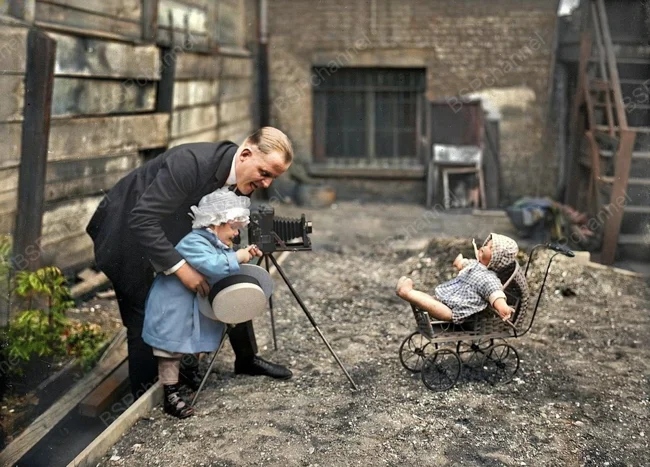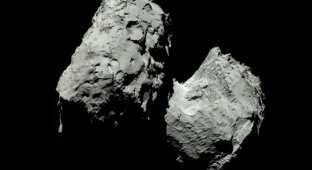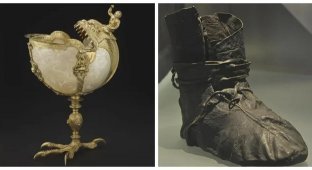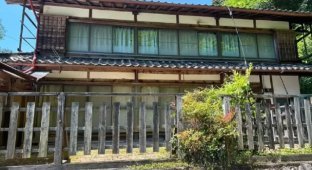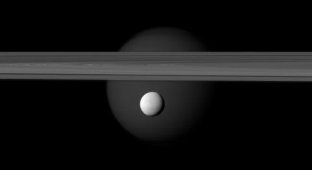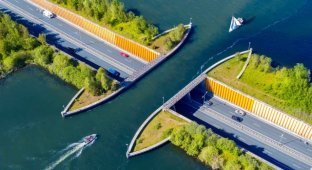A selection of interesting and unusual photos from the USA (21 photos)
These shots tell the story of America through the eyes of photographers: from the streets of big cities to the quiet provincial corners, from celebrities to ordinary people. 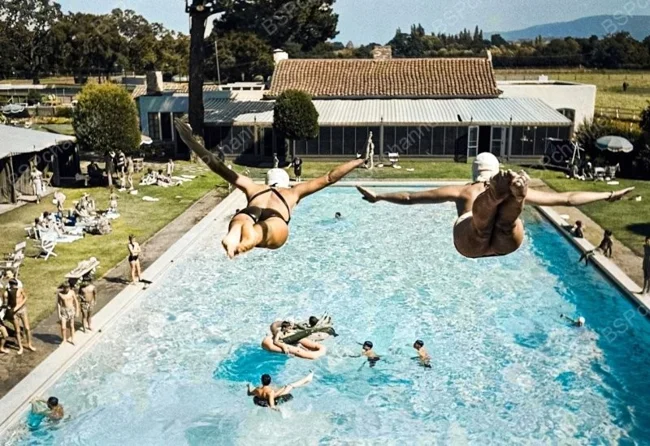
New York Barber School, 1959. 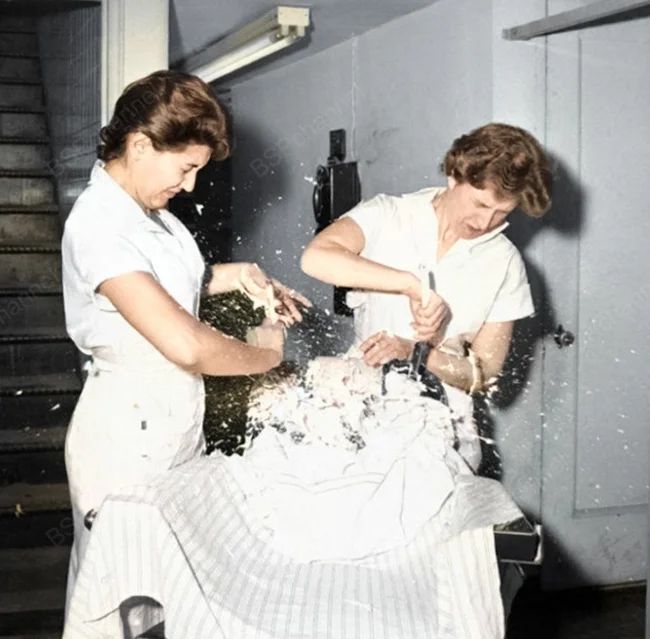
Luckily, the training was conducted in a hot air balloon. They apply shaving cream to the ball and have to rub it off with a blade. One mistake and the ball pops.
Abandoned farm, Oklahoma, USA, 1942. 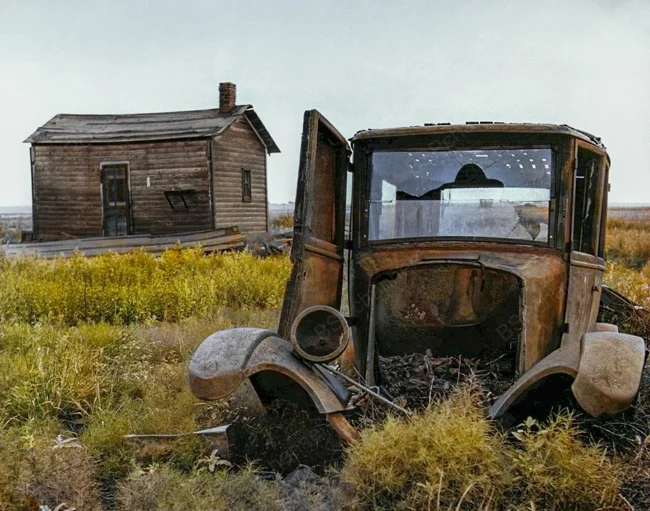
Photographer: Alfred Eisenstaedt
One of the most difficult periods in US history was the Dust Bowl era - a series of devastating droughts and sand and dust storms that swept across the central states of the country in the 1930s. It was not just a natural disaster, but a massive ecological and economic catastrophe that became a symbol of the Great Depression. By the mid-1930s, 100 million acres of farmland had become virtually barren. People were forced to leave their homes and move to other states.
Construction of the George Washington sculpture on Mount Rushmore. Keystone, South Dakota, USA, 1940. 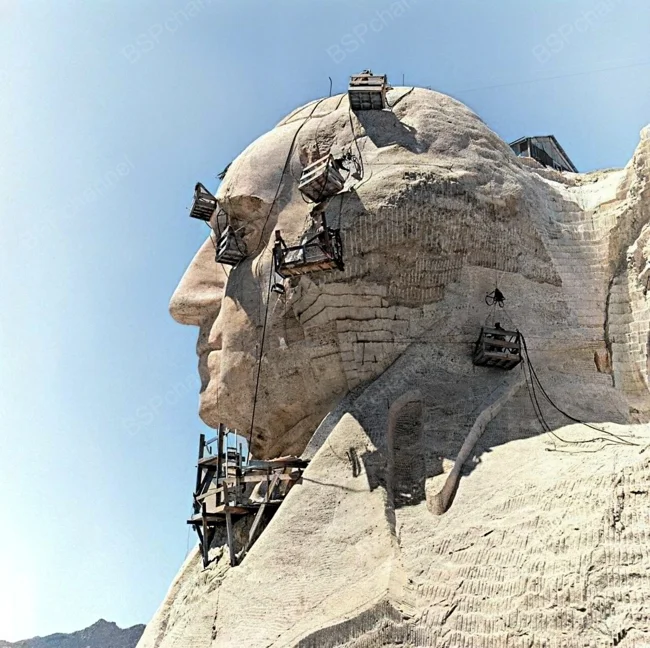
Photographer: Alfred Eisenstaedt
One of the most recognizable symbols of the United States and American history is the Mount Rushmore memorial, located in South Dakota. It is a giant portrait of four US presidents carved into the rock: George Washington, Thomas Jefferson, Theodore Roosevelt and Abraham Lincoln. The construction of the monument began with the very first president, George Washington. The initiator of the monument was the South Dakota State Attorney General Doane Robbins, who wanted to attract tourists to the region. In 1923, he invited sculptor Gutzon Borglum, known for his large-scale works, to implement the project. Borglum chose Mount Rushmore as the ideal place to implement the idea. Work on the sculpture began on October 8, 1927. The first image chosen was that of George Washington, a symbol of the founding of the American republic. The choice was no accident: Washington personifies the strength, honor and independence of the new nation. The process of creating the portrait lasted more than seven years and was completed in 1934. The next three heads were completed by 1941.
Result of a lost bet on the outcome of the 1948 US presidential election. 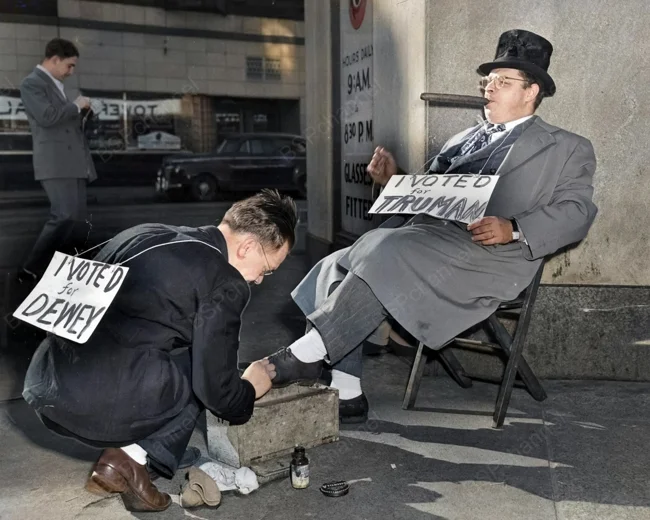
In November 1948, the Winkowski brothers, Alexander and Martin, made an unusual bet on the outcome of the presidential election between the incumbent President Harry Truman and Republican Thomas Dewey. The bet was simple: whoever won would have to shine shoes every Sunday for six months. And although most media and experts gave Dewey the advantage, the unexpected Truman won. Thus, Martin ended up losing - and kept his word. Every Sunday for six months, he would come to a designated spot in downtown Chicago and carefully shine his brother Alexander's shoes, proof that even among relatives, a sense of humor and respect for one's word can be maintained.
Central Park, New York, 1955. 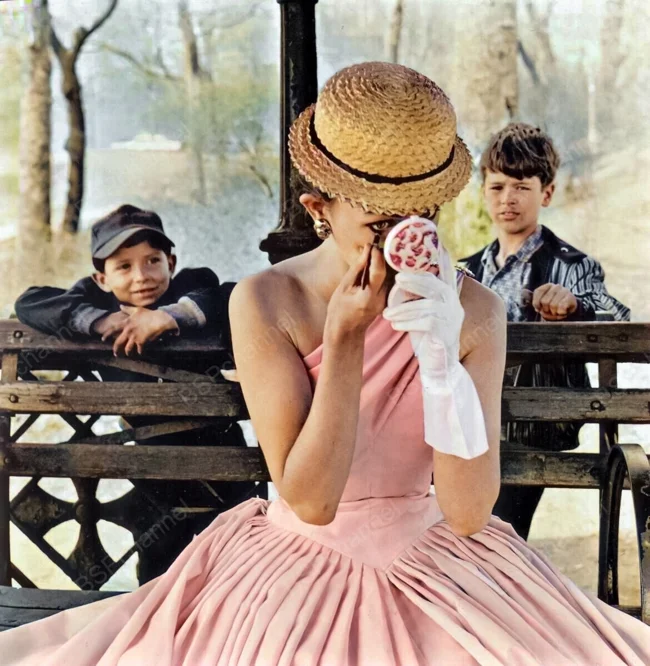
Photographer: Frank Paulin
The liner "Queen Elizabeth" in the harbor of New York, USA, 1958. 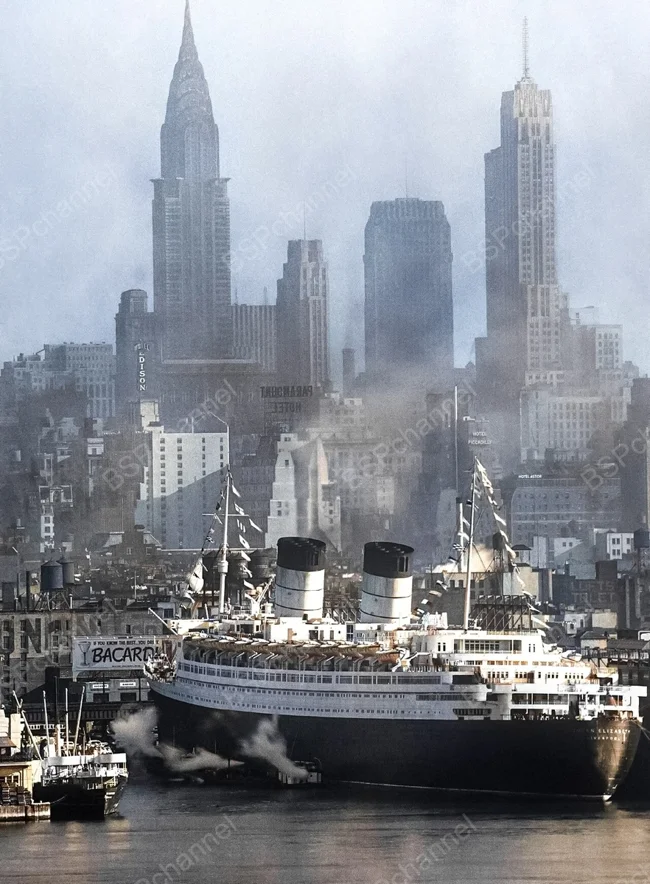
Photographer: Andreas Feininger
One of the most famous and majestic ocean liners of its time, the RMS Queen Elizabeth was a symbol of luxury, technological progress and the era of transoceanic travel. The ship was built at the John Brown & Company shipyard in Scotland and launched in 1938. It became the second largest passenger liner after its "older brother" - the RMS Queen Mary. Both ships belonged to the British shipping company Cunard Line and were considered true masterpieces of marine engineering. Due to the outbreak of World War II, the civilian purpose of the liner was postponed. Instead, she was converted into a troop transport. Codenamed HMT Queen Elizabeth, the liner carried Allied troops around the world, from the Mediterranean to India and New Zealand.
Advertisement portrait of actress Jeanette Loff (1906-1942) dressed as an Easter Bunny. USA, 1930s. 
A lonely young African American child sucks his thumb next to a covered canary cage in a school shelter during a major flood, 1937. 
Photographer: Margaret Bourke-White
California Road Trip, San Diego Shoreline, 1968. 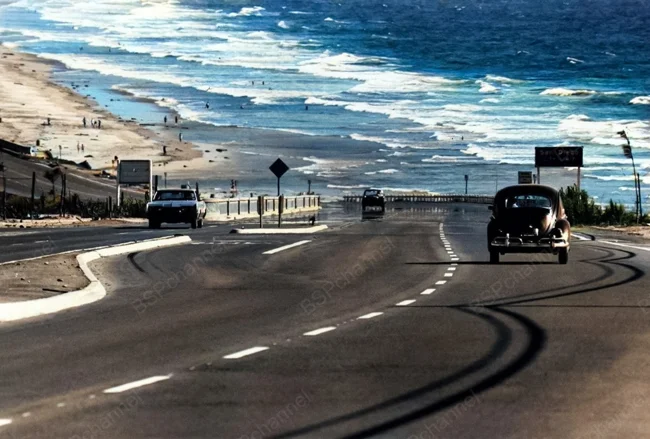
Photographer: Dennis Stock
A worker inspects a 34-ton propeller to be installed on the United States liner, New York, USA, 1951. 
Photographer: Alfred Eisenstaedt
More than 70 years ago, this liner, larger than even the legendary Titanic, set a speed record on the Atlantic. The United States was the pride of the American fleet: it carried presidents, Hollywood stars, including such famous personalities as Elizabeth Taylor and John F. Kennedy, connecting New York with Europe in record time. With the development of air travel, the ship became very unprofitable and in 1969 the ship was decommissioned. For several decades now, the ship has been standing and rotting in the port of Philadelphia. In 2024, news came that marked the sad but symbolic end of an era: the last holder of the prestigious naval record, the Blue Riband, would be sunk and turned into the largest artificial reef in history.
Underground nuclear explosion. USA, October 22, 1964. 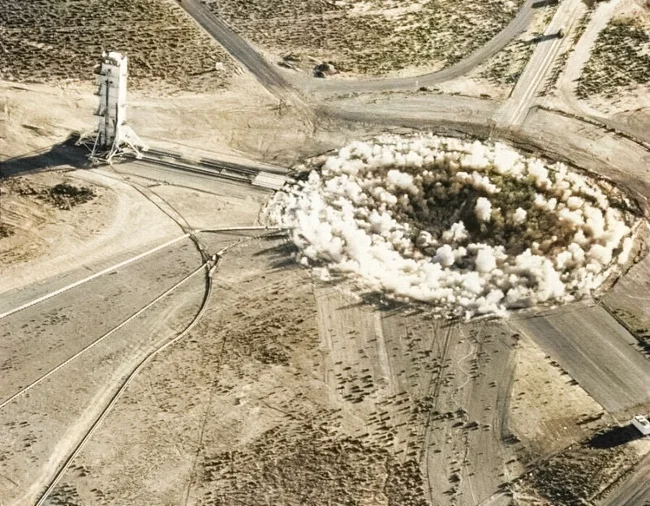
During the Cold War, when nuclear energy seemed the key to the future, the United States developed an unusual project - the use of nuclear explosions for peaceful purposes. This program was called Operation Plowshare. This is a series of experiments conducted by the United States from 1961 to 1973, aimed at studying the possibility of using nuclear explosions for civilian purposes: creating artificial harbors and canals, extracting minerals, increasing the flow rate of gas and oil wells, building reservoirs. The idea was to use the colossal energy of the atom not for destruction, but for construction and development. After the experiments of the Plowshare project in the United States created zones of radioactive contamination, the initiative began to lose support. Many owners of private land categorically refused to allow such tests on their land. All this eventually led to the closure of the program. In 1965, the Soviet Union launched its own analogue of the Plowshare - the so-called "Program N7", also aimed at studying the peaceful use of nuclear explosions. The program existed for more than two decades, but by 1988 it was finally curtailed, becoming part of the history of the Cold War.
A demonstration of an underground economy class bomb shelter that could accommodate 8 to 12 people, USA, 1958. 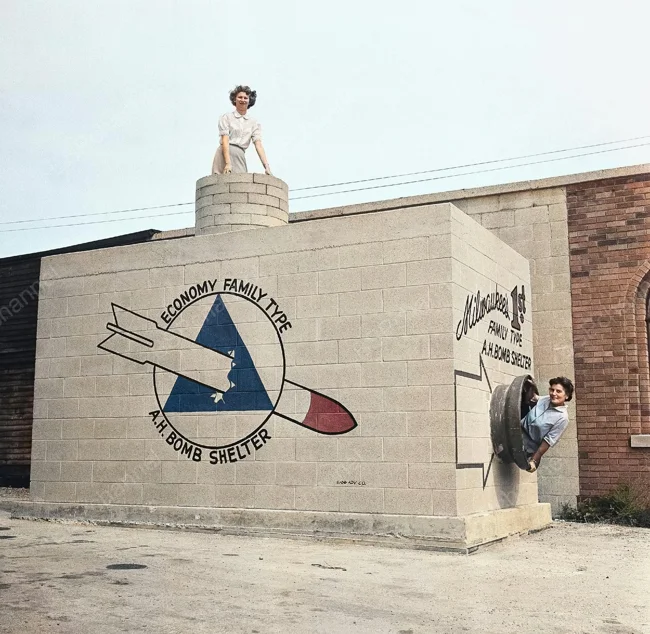
The famous Hollywood sign, 1920s. 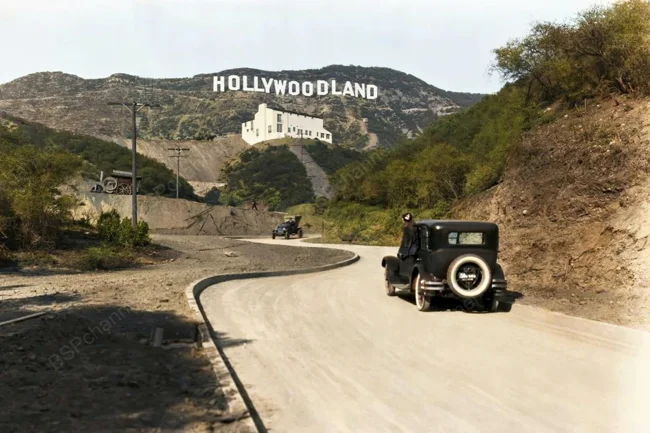
The sign known today as "Hollywood" was originally called "Hollywoodland". It was installed in 1924 as an advertisement for a new housing development on Mulholland Drive. This area was positioned as an elite place to live with a view of Los Angeles. Over time, the sign became a symbol not only of the development, but also of the entire cinematic world. However, in 1949, the last four letters - "LAND" - were dismantled, and the sign finally turned into the famous word "HOLLYWOOD", by which it is known throughout the world.
A walk on the roof, New York, 1940. 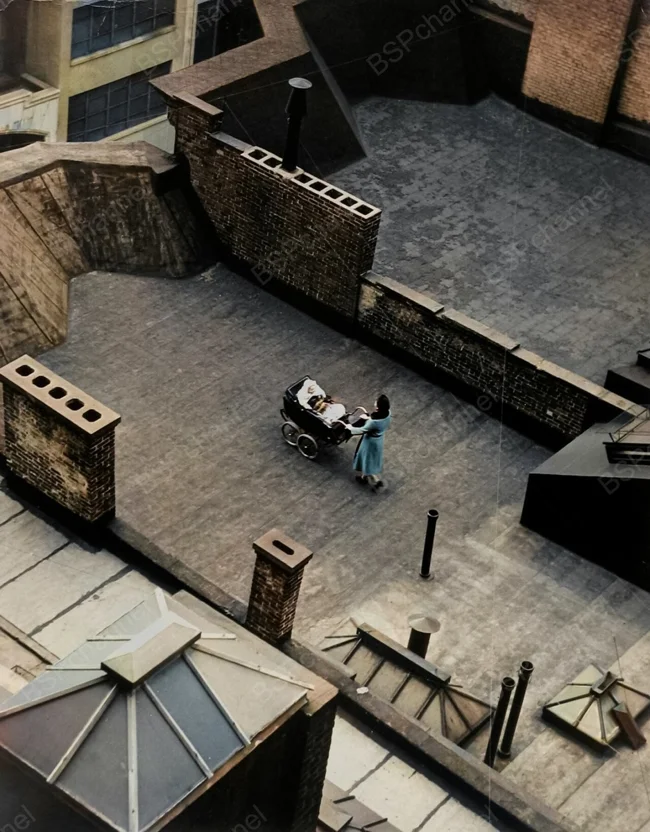
Photographer: Martin Munkacsi
Fog in San Francisco. USA, 1950. 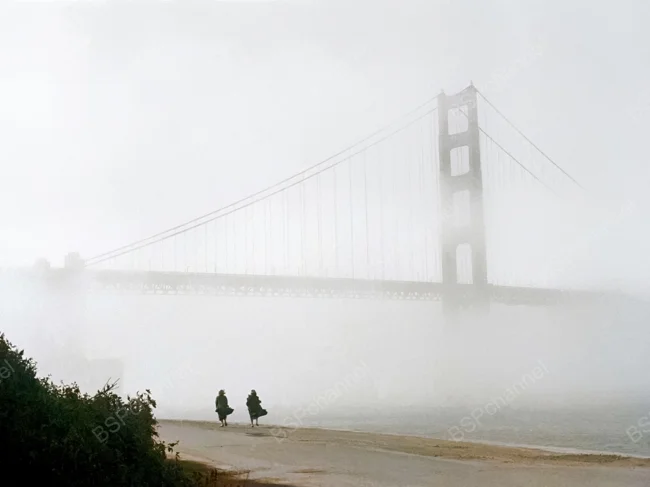
Photographer: Fred Lyon
Winter cycling. USA, 1930s. 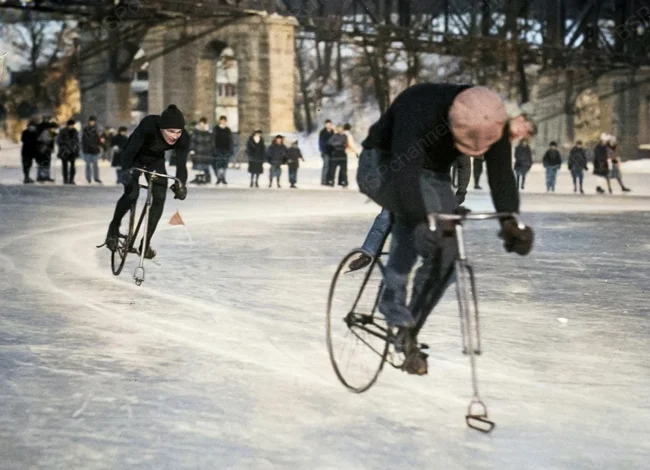
Jumping into a pool. USA, 1947. 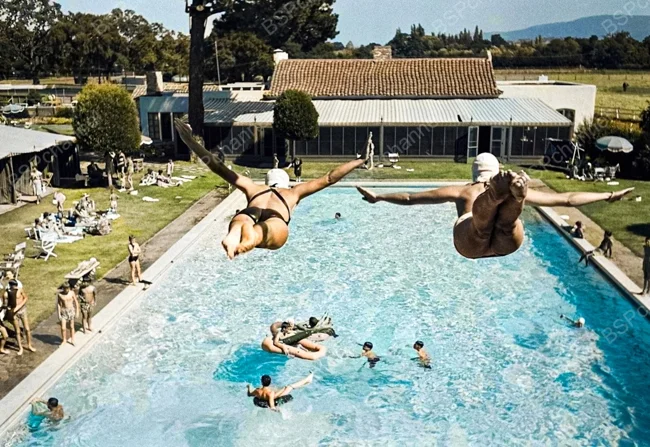
Train and automobile. Wyoming, USA, 1954. 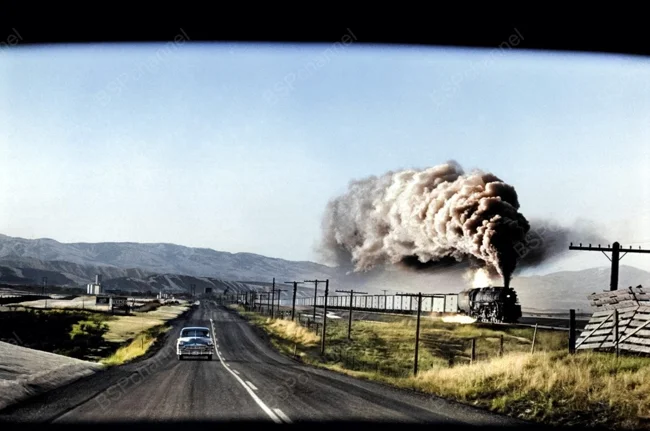
Photographer: Elliott Erwitt
Hay baling in Buffalo County, Nebraska, 1903. 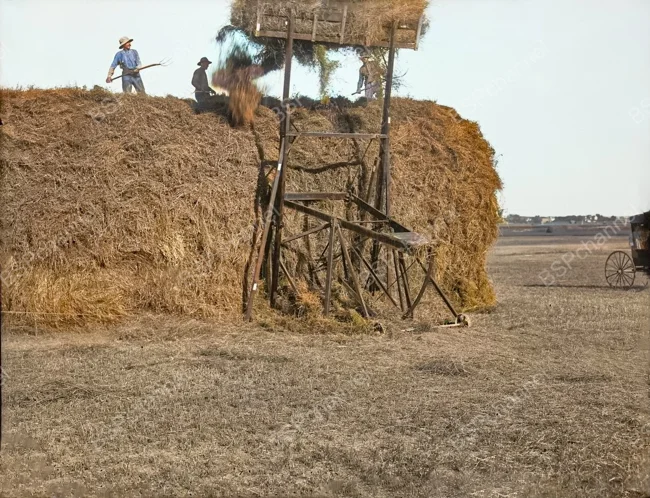
Clarinetist Ross Gorman and his daughter with a camera trained on a doll in a stroller. Exterior, New York City, 1920. 